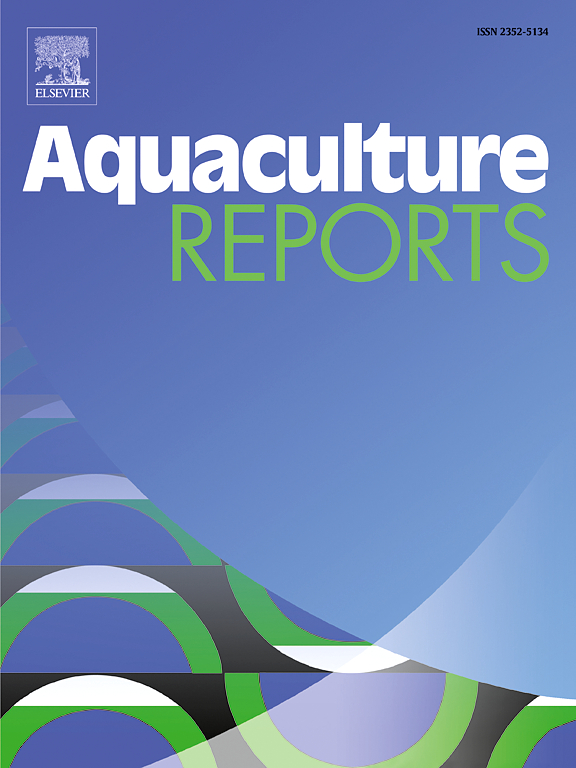Whole-genome sequencing and resequencing for genome-wide identification of candidate sex-specific markers in the camouflage grouper (Epinephelus polyphekadion)
IF 3.7
2区 农林科学
Q1 FISHERIES
引用次数: 0
Abstract
As an endangered reef fish, the camouflage grouper (Epinephelus polyphekadion) has been recently cultured in south China costal area. The prevalent utilization of males E. polyphekadion in distant hybridization highlights the economic and ecological importance of developing genetic methods for accurate sex identification at early developmental stages. Here, we present a 1.08-Gb chromosome-level genome assembly for E. polyphekadion by using Illumina short-read, PacBio long-read, and Hi-C sequencing technologies. Remarkably, 99.69 % of the scaffolds were anchored onto 24 chromosomes, with contig N50 and scaffold N50 values of 28.09 Mb and 45.93 Mb, respectively. The genome comprises 42.85 % repetitive sequences and is annotated with 24,067 protein-coding genes, achieving a 98.37 % functional annotation rate. BUSCO analysis confirmed 98.0 % completeness, attesting to the assembly's high quality. Importantly, through whole-genome resequencing, we identified two sex-specific markers (three SNP sites), enabling a PCR-based gender identification assay for E. polyphekadion. Comparative genomic analyses with other Perciformes reveal Epinephelinae evolutionary trajectories across chromosomes. This study not only advances our understanding of the genetic and evolutionary dynamics of E. polyphekadion but also provides a crucial resource for genetic breeding and studies on gonadal development in reef fishes.
伪装石斑鱼(Epinephelus polyphekadion)候选性别特异性标记全基因组测序和重测序
伪装石斑鱼(Epinephelus polyphhekadion)是一种濒危的礁鱼,近年来在华南沿海地区开始养殖。在远缘杂交中对雄性多角角龙的普遍利用突出了在发育早期发展准确性别鉴定的遗传方法在经济和生态方面的重要性。在这里,我们利用Illumina短读、PacBio长读和Hi-C测序技术,建立了1.08 gb染色体水平的E. polyhekadim基因组组装。值得注意的是,99.69 %的支架锚定在24条染色体上,N50和支架N50值分别为28.09 Mb和45.93 Mb。基因组包含42.85 %的重复序列,被24,067个蛋白质编码基因注释,实现98.37 %的功能注释率。BUSCO分析证实98.0 %的完整性,证明了组件的高质量。重要的是,通过全基因组重测序,我们确定了两个性别特异性标记(三个SNP位点),从而实现了基于pcr的多角棘球线虫性别鉴定。与其他尾形目的比较基因组分析揭示了跨染色体的进化轨迹。该研究不仅促进了我们对多角角鱼遗传进化动力学的认识,而且为礁鱼的遗传育种和性腺发育研究提供了重要的资源。
本文章由计算机程序翻译,如有差异,请以英文原文为准。
求助全文
约1分钟内获得全文
求助全文
来源期刊

Aquaculture Reports
Agricultural and Biological Sciences-Animal Science and Zoology
CiteScore
5.90
自引率
8.10%
发文量
469
审稿时长
77 days
期刊介绍:
Aquaculture Reports will publish original research papers and reviews documenting outstanding science with a regional context and focus, answering the need for high quality information on novel species, systems and regions in emerging areas of aquaculture research and development, such as integrated multi-trophic aquaculture, urban aquaculture, ornamental, unfed aquaculture, offshore aquaculture and others. Papers having industry research as priority and encompassing product development research or current industry practice are encouraged.
 求助内容:
求助内容: 应助结果提醒方式:
应助结果提醒方式:


